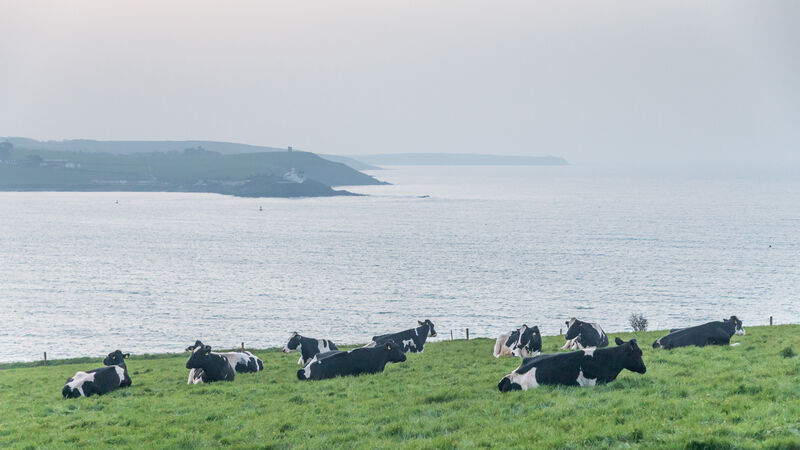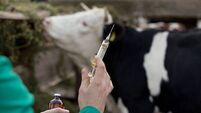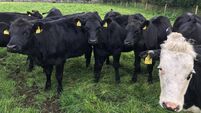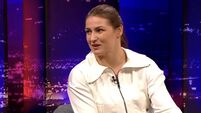New Study points to EU agricultural production falling at least 25%

The Study also finds there is growing anger against farmers - identified as the main sector responsible for environmental degradation. Picture: David Creedon, Anzenberger
Experts predict EU agricultural production falling at least 25% by 2050.
Six researchers, drawing on intelligence from more than 50 specialists across policy, civil society, industry and academia, were asked for EU 2050 bioeconomy scenarios.
The result has been published by the European Commission’s Joint Research Centre science and knowledge service.
The authors say the most unfavourable of their four scenarios may be the most realistic, given the trends of the last three decades.
This is the scenario where little is done to meet climate goals.
It results in the Paris climate targets being clearly missed (instead, temperatures increase 3.5C by 2100).
It would be the result of business as usual for consumption (no societal change), and of “muddle-through”, short-sighted, un-coordinated, and non-integrated government policy.
Agricultural production drops 25% due to soil degradation, loss of agricultural area, and land abandonment.
Carbon sequestration by land use reduces.
However, meat and milk production remain at 2020 levels, with much of the resulting surplus exported, but creating repeated market crises.
Rural and urban areas are more alienated.
There is growing anger against farmers, identified as the main sector responsible for environmental degradation.
The EU budget allocated to farmers is radically reduced.
In another scenario, consistent and coherent government policies foster radical change in supply systems, but society resists significant changes.
The Paris target is nearly achieved (a 2C temperature rise).
Due to climate change, reduction of farmland, and less intensive farming, EU production falls 25%, compared to 2020.
Farming is now 70% organic, pesticides and antibiotics are used only for emergency reasons.
Agricultural climate neutrality has been achieved.
Livestock in the EU decrease by 30%, meat production by 50%, milk by 65%. But there is only a slight decrease in consumption of animal products.
EU imports grow, especially of meat and fish, and exports, especially pork meat, decrease.
Lab-food such as cultured meat, has a 25% share of food sales by 2050. Vertical farming (cropping in vertically stacked layers, usually controlled- environment and without soil) has a 25% share in fresh vegetable sales.
Chinese, Indian, and Brazilian corporations are the new international food players.
If both the political system and society are aligned to achieve climate-neutrality and UN sustainable development goals, the scenario includes the Paris target (only a 1.5C temperature rise) achieved.
Agroecology is the accepted practice of most farmers by 2050.
Much land is re-naturalised or turned into carbon farms. Nature protection is increased massively.
Consumers prefer local, low-dairy food, and avoid food waste. Agricultural production is 35% less than 2020.
The number of EU farms has fallen from 10m to 6m. An EU carbon border tax protects farmers, and Europe leads for high-quality food exports (cheese, novel food, wine) and innovative bio-based products.
Large grassland areas supply biorefineries producing proteins. This scenario happens only after massive ecological and political crises, when social movements encourage new production and consumption practices.
Scenario Number Four is consumers changing attitudes and behaviour, led by increasingly influential social movements, in the aftermath of dramatic ecological crises. But governments cannot implement significant climate policies.
The Paris target is missed, with the global temperature rising 2.5C by 2100.
There is more spending on food by EU citizens due to savings in energy expenditure, and this pushes demand for local food products of high quality. But community-based production can’t keep up. EU food production has fallen 25% compared to now.
The European food industry, however, has continued to innovate on health and sustainability products, becoming a global leader.








![Johnny_Stephens_Photography-02-425A6831-Edit[1].jpg Restaurant review: The Ivy Asia is an assault on all five senses — I hated it](/cms_media/module_img/9752/4876311_6_teasersmall_Johnny_Stephens_Photography-02-425A6831-Edit_5b1_5d.jpg)
